Many children write backward letters and numbers when learning to write. This is typical handwriting and a normal part of learning letter formation. However, sometimes it can be hard to break this habit. Other times, children really struggle with reverse text in a way that they write upside down or flip letters. For older children, there may be underlying visual perceptual issues going on. We’ve covered some of the reasons for letter reversals previously on this site. Today, I wanted to share a fun and creative way to work on letters that are commonly written backwards or mixed up. When older kids write upside down letters or mirror write letters, it can mean spelling words are marked wrong because of letter errors. This simple, hands-on activity should help.
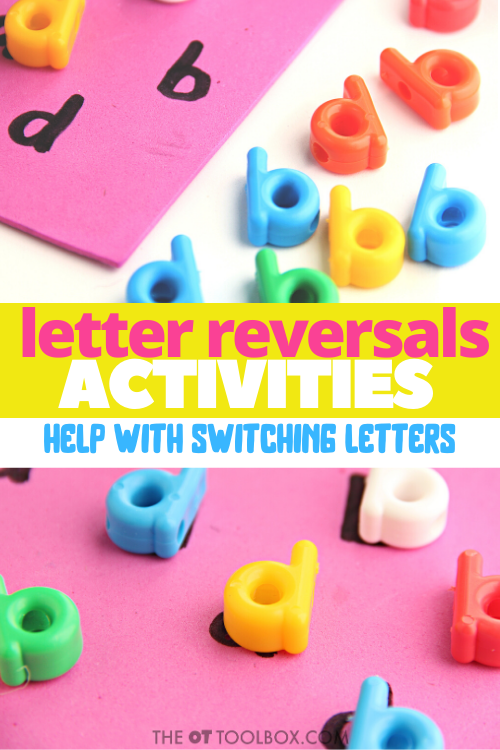
Letters that are written BACKWARDS
There are a handful of letters that are commonly mistaken or reversed in text. Others are written upside down, resulting in a different letter. Mirror writing is one aspect of visual processing that may occur when perceptual or efficiency difficulties are present. A good place to start in gaining a better understanding on visual processing is in this post on vision problems you cannot “see”.
Letters that are commonly reversed or flipped include: b, d, and p. These letters may be interchanged with one another. A child may read or write a letter “b” when they mean to write a letter “d”. Another set of letters that are commonly written backwards and are confused for the other letter include g and q. Other letters that are just written backwards but not confused for another letter includes j, s, y, z. Upper case letters that are commonly written in reverse include: B, D, J, N, P, S, Y, and Z.
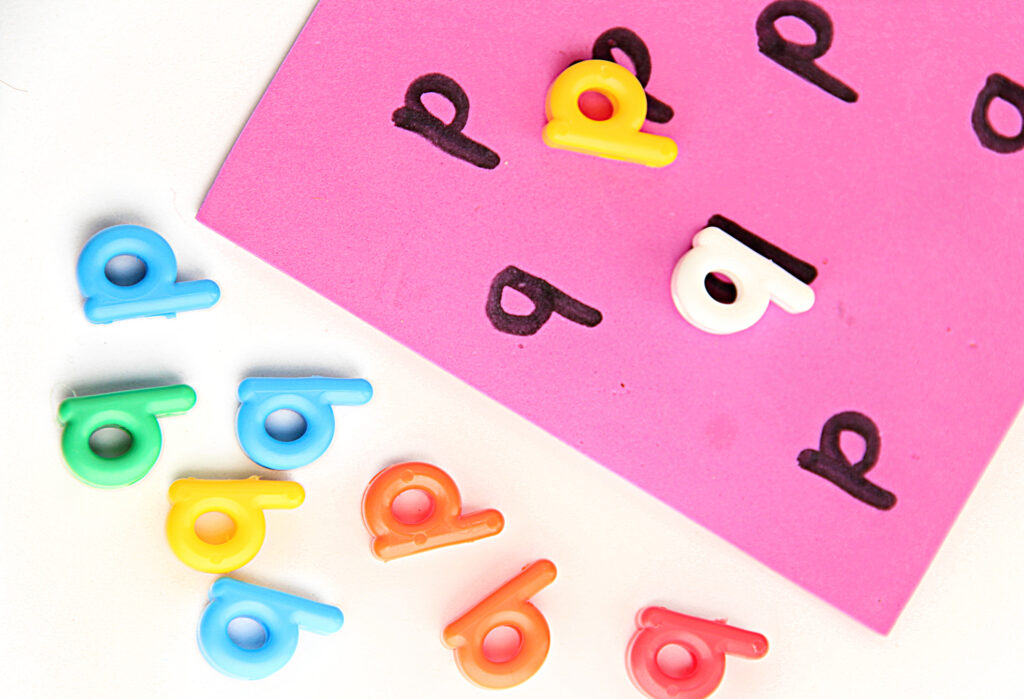
Activity to Help with Writing Backwards Letters
This fun activity helps kids discriminate between correct formation and backward letters or flipped letters. For this letter reversal activity, we used lowercase letter beads from Roylco. (Use the coupon code “OTTOOLBOX” to save 10% on these letters and anything else on the Roylco website. Affiliate link) These letters have a small hole in them making them great for threading and other fine motor activities as well as the visual motor activity we are describing here.
Any letter beads or magnets would work for this letter. We are attempting to work on discrimination, or differentiation between the letters to address flipping letters or writing in reverse.
We also used a piece of foam craft sheet, but a plain piece of paper would work well, too. To set up this letter reversal activity, identify two or three letters that are commonly mixed up. We are working on lowercase letters “b” and “d” in this activity. I wrote letters b and d on the foam sheet in the same size as the lowercase letter beads. I placed a handful of b and d beads next to the sheet and asked my kindergartner to place the letters on the matching letter.
She was able to visually scan and locate a letter after picking up a letter bead manipulative. We extended the activity by hanging her name the letter, produce the sound of the letter, and name a word that begins with that letter. She then located the match and placed the bead onto of the letter on the foam sheet.
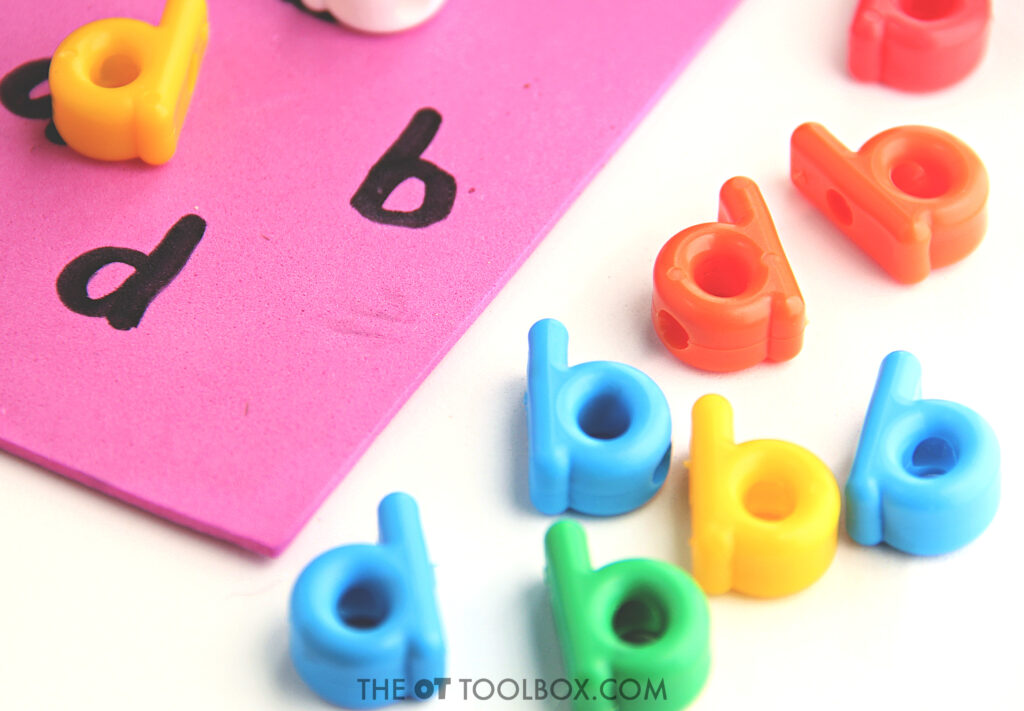
There are several areas we worked on with this activity:
Letter identification- By picking up a letter and identifying letters from a group of similar letters, she had repetitive practice in identifying aspects of the letter. The small lowercase letter beads offer a smooth texture that is pleasing to hold or manipulate while naming the letter.
Phonetic awareness and letter reversals– Identifying letters and paring it with naming the sound and using that sound in a word is a way to practice phonetic awareness, which has been found to aid in correct letter formation. In fact, there can be a connection between letter reversal problems and phonetic awareness delays.
Fine motor skills- Picking up and manipulating small letter beads is a great way to work on dexterity and finger control. Placing the letter beads on the written form requires eye-hand coordination and precision. Here are more activities to work on fine motor skills in kids.
Visual Scanning– Searching for the written letter that matches the letter bead is another way to practice letter identification and differentiating differences between the letters. Here is more information and a fun visual scanning activity.
Eye-hand coordination- Picking up and placing the letter beads and placing them onto the written letter requires coordinated movements of motor skills and visual system. This is another eye-hand coordination activity to work on letter matching and identification.
Don’t have letter beads? Try cutting small pieces of paper and writing letters on the slips. They can then be placed over the letters on the large piece of paper as children visually scan for the match while practicing form discrimination.
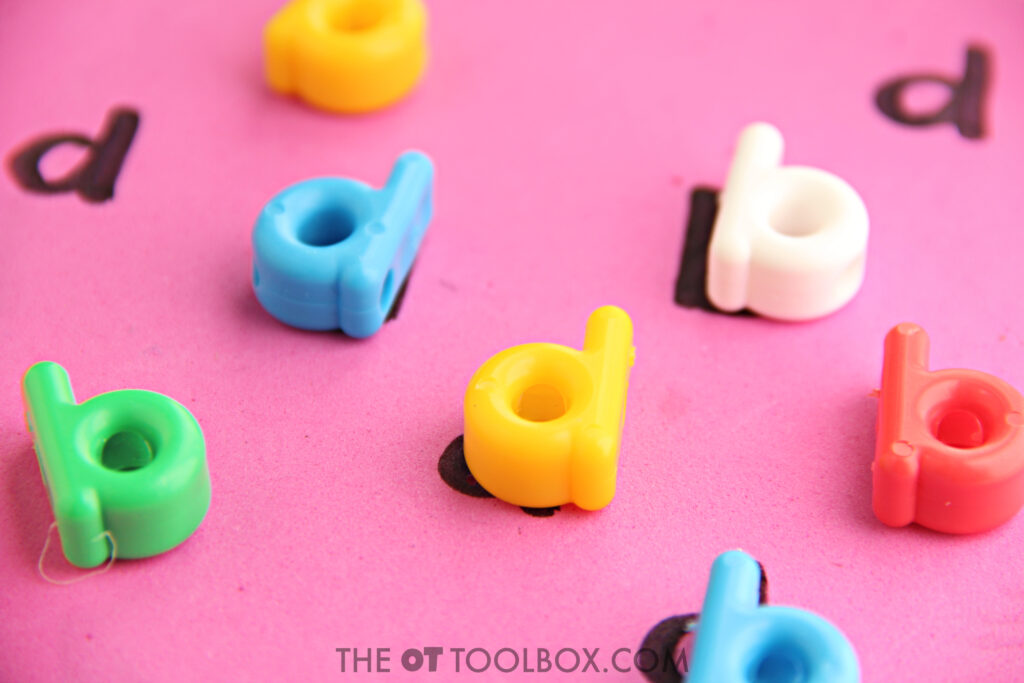
More visual perception tools
Try some of these related activities to work on visual perceptual skills:
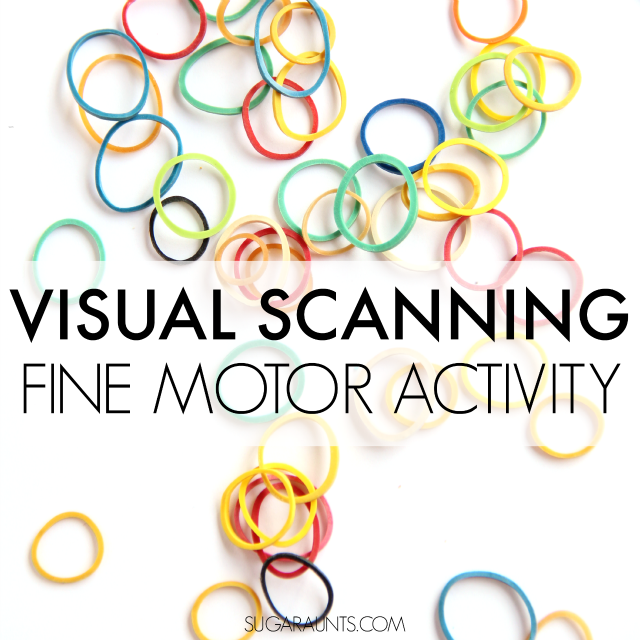
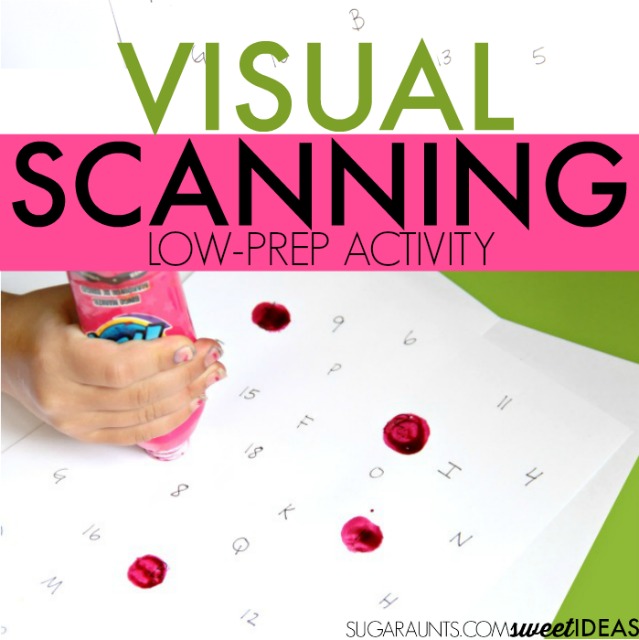
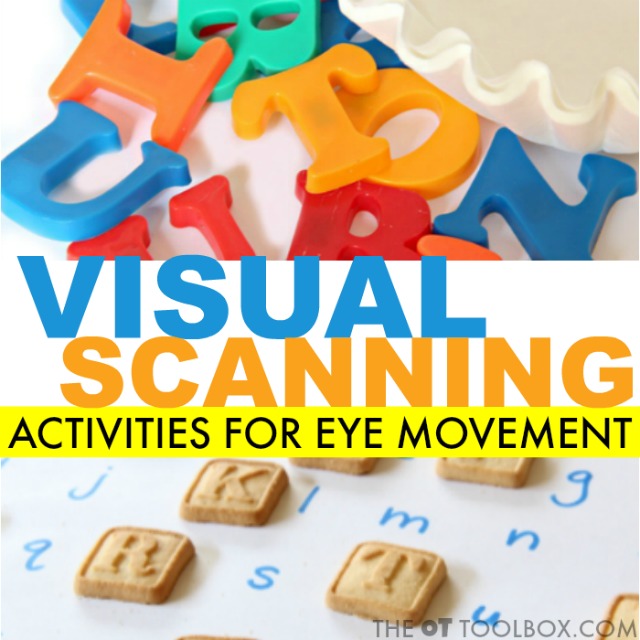
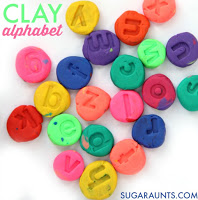
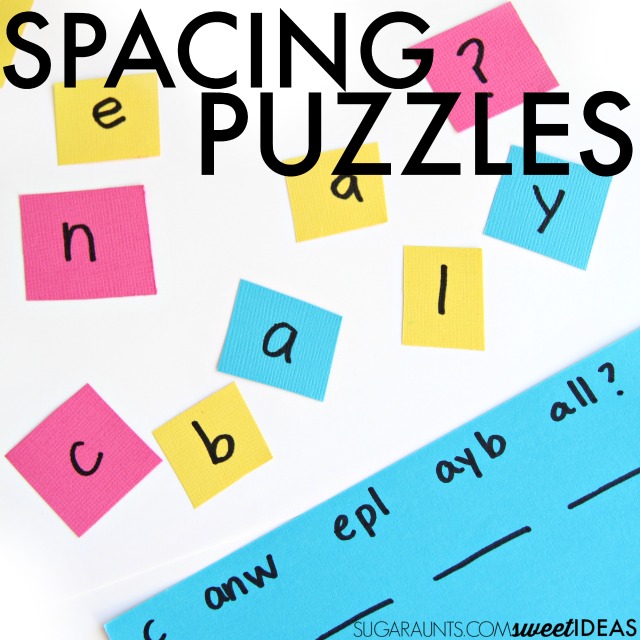
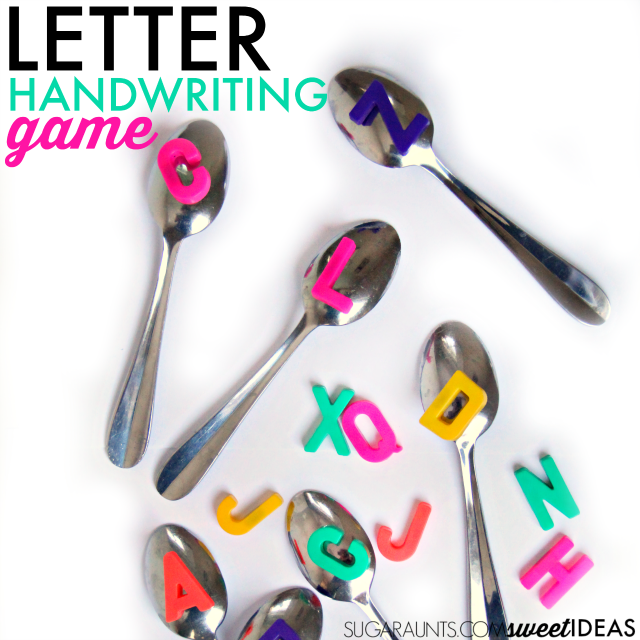
Visual Scanning Fine Motor Activity
Low-Prep Visual Scanning Letter Activity
Letter Matching with Coffee Filters
Letter Identification and Letter Matching with Stamps
Letter Search and Fine Motor Activity with Spoons
Gain a better understanding of visual processing, visual perception and how this impacts letter formation and writing backward letters. Join us in the Visual Processing Lab.

Colleen Beck, OTR/L has been an occupational therapist since 2000, working in school-based, hand therapy, outpatient peds, EI, and SNF. Colleen created The OT Toolbox to inspire therapists, teachers, and parents with easy and fun tools to help children thrive. Read her story about going from an OT making $3/hour (after paying for kids’ childcare) to a full-time OT resource creator for millions of readers. Want to collaborate? Send an email to contact@theottoolbox.com.


